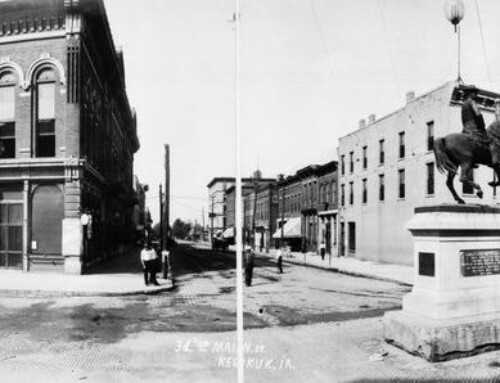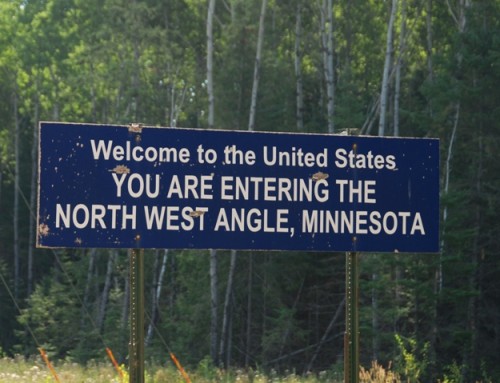In honor of Election Day, I offer three short stories of nineteenth century political games in Mississippi River towns. As new areas were settled, communities fought contentious political battles over the location of the county seat, like these places did. Enjoy!
Rock Island County (Illinois)
In 1833, Hampton and rival Farnhamsburg (now Rock Island) competed for the coveted Rock Island (Illinois) county seat. The men of Farnhamsburg had already decided that their town would get the courthouse, they just needed to ensure that the vote confirmed their decision. They enlisted the help of George Davenport to summon additional voters, should their votes be needed to swing the election. When Davenport waved his handkerchief in signal, the Hampton men saw the move and were ready. Fearing that the signal was meant to enlist soldiers from Arsenal Island to vote, the Hampton contingent seized the poll book and raced away. This would ordinarily prevent any further votes from being cast. Ah, but the men of Hampton had been outwitted again. The election clerks were warned in time and replaced the real poll book with a blank one. When the Hamptoners were safely out of sight, the clerks retrieved the real book and continued voting. Farnhamsburg won the county seat and Hampton was consigned to the life of a quiet river town.
Scott County (Iowa)
Rockingham was founded in 1835 on the Iowa bank of the Mississippi River, just across from the mouth of the Rock River. The town seemed ideally located – except for the inconvenient fact that flooding turned the town into an island every year. In spite of its wet location, Rockingham had 100 residents by the summer of 1836—twice as many as its neighbor, Davenport. The town of Davenport, named after the George Davenport who lived across the river, grew very slowly in its first few years. When Scott County was organized, an election was scheduled to select a location for the county seat. In the first round of voting, Davenporters imported lead miners from Dubuque (“the most wretched looking rowdies that ever appeared on the streets of Davenport”) and paid them ten barrels of whiskey for their votes. After two more contentious and equally corrupt elections, the dust settled and Davenport won the county seat. Antoine LeClaire soothed hurt feelings by donating land and $3,000 to build the first courthouse. Davenport eventually annexed Rockingham.
Allamakee County (Iowa)
The battle for Allamakee county seat may be the most impressive of the three – it took ten elections over twenty-five years to settle the issue, and most of the elections were decided by a handful of votes. The fighting began when an area called The Stake was chosen as the first county seat in 1849. No one really liked the decision and in 1851 Columbus (near Lansing) won an election to host the county seat. They didn’t keep it for long, however. Another election was held in 1853 and this time Waukon won. Feeling confident of their hold on the county seat, Waukon residents built a courthouse in 1859. Alas, another election in 1861 took the county seat from them and gave it to The Point (in south Lansing). Residents of The Point quickly tried to cement their hold on the county seat by building another courthouse. Disputes over which community was the legitimate county seat simmered for several more years. In 1866, several Waukon residents, including the sheriff, raided the courthouse at The Point and stole county records; a posse from Lansing pursued and caught them, returning the records to The Point. But, in 1867, the Iowa Supreme Court declared that Waukon was the rightful winner of the last election and was again awarded the county seat. In 1875, one more election was held and Waukon won again. No county seat elections have been held since. Both courthouses are still standing, which is more than can be said for Columbus (now mostly farmland) or The Point (now part of Lansing).
© Dean Klinkenberg, 2008





[…] became the county seat after winning a contested election with Hampton (read more about it here). In 1835, Illinois bought land for a new county seat in a town they decided to call Stephenson. […]
[…] Black Hawk War. A new courthouse was completed in 1837 and town grew quickly (read about the early fight to make Stephenson the county seat); by 1840 Stephenson had 600 residents. The following year, […]